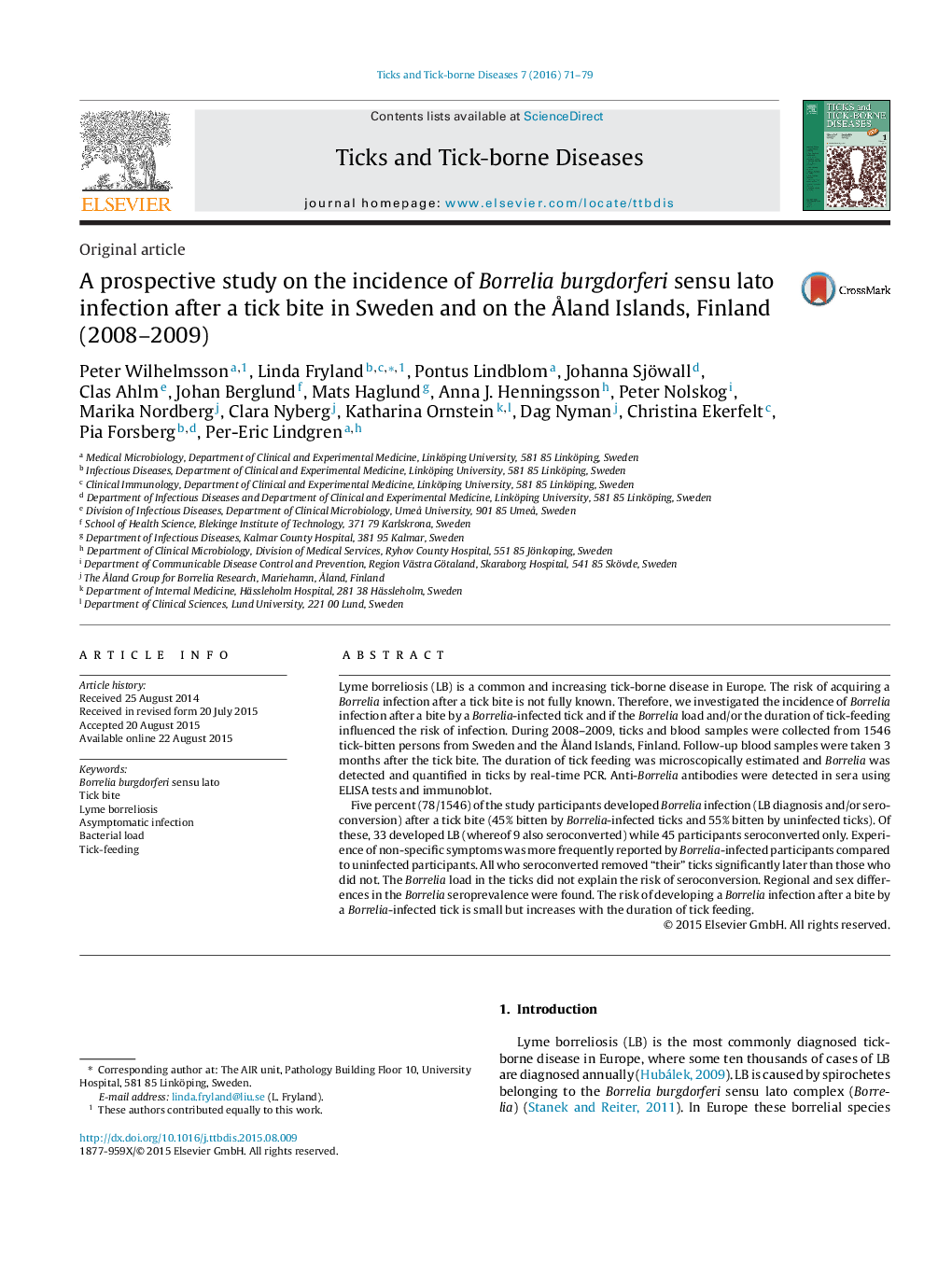| Article ID | Journal | Published Year | Pages | File Type |
|---|---|---|---|---|
| 5807012 | Ticks and Tick-borne Diseases | 2016 | 9 Pages |
Lyme borreliosis (LB) is a common and increasing tick-borne disease in Europe. The risk of acquiring a Borrelia infection after a tick bite is not fully known. Therefore, we investigated the incidence of Borrelia infection after a bite by a Borrelia-infected tick and if the Borrelia load and/or the duration of tick-feeding influenced the risk of infection. During 2008-2009, ticks and blood samples were collected from 1546 tick-bitten persons from Sweden and the à land Islands, Finland. Follow-up blood samples were taken 3 months after the tick bite. The duration of tick feeding was microscopically estimated and Borrelia was detected and quantified in ticks by real-time PCR. Anti-Borrelia antibodies were detected in sera using ELISA tests and immunoblot.Five percent (78/1546) of the study participants developed Borrelia infection (LB diagnosis and/or seroconversion) after a tick bite (45% bitten by Borrelia-infected ticks and 55% bitten by uninfected ticks). Of these, 33 developed LB (whereof 9 also seroconverted) while 45 participants seroconverted only. Experience of non-specific symptoms was more frequently reported by Borrelia-infected participants compared to uninfected participants. All who seroconverted removed “their” ticks significantly later than those who did not. The Borrelia load in the ticks did not explain the risk of seroconversion. Regional and sex differences in the Borrelia seroprevalence were found. The risk of developing a Borrelia infection after a bite by a Borrelia-infected tick is small but increases with the duration of tick feeding.
